Column
2025.07.16
Complete Guide to Kanji Tattoos | Meaning, Design, and Top Tattoo Studios in Tokyo

In recent years, kanji tattoos have been gaining popularity around the world. Their artistic appeal and deep meanings attract many, but some people end up regretting their tattoos due to a lack of understanding of the characters’ meanings. In this article, we’ll explore the appeal of kanji tattoos, how to choose them wisely, and introduce recommended tattoo studios in Tokyo.
1. The Appeal of Kanji Tattoos
1.1 Visual Beauty
Kanji tattoos are admired for their artistic and visual elegance. The intricate strokes create beauty that transcends mere letters. From flowing calligraphy styles to modern, minimalist fonts, the expressive possibilities are limitless.
Even a single character holds a strong presence. Combining characters can deepen their meaning, and kanji’s versatility makes it look stunning on any part of the body.
1.2 Depth of Meaning
The true appeal of kanji lies in the profound meaning each character conveys. Rooted in ideograms, kanji offers philosophical nuances that represent personal values or beliefs.
Popular choices among foreigners include characters like “愛 (love),” “夢 (dream),” “力 (strength),” “平和 (peace),” and “希望 (hope).” In recent years, deeper concepts such as “無限 (infinity),” “刹那 (moment),” and “不屈 (resilience)” have also become increasingly popular.
1.3 Design Flexibility
Kanji tattoos are incredibly flexible in terms of layout and size. They can be designed vertically or horizontally, from simple one-character pieces to complex multi-character expressions.
They also pair beautifully with other design elements such as flowers, animals, or geometric patterns, allowing for unique and highly personalized tattoos.
2. Popular Kanji Tattoo Designs
2.1 Kanji with Strong Meaning
**孤高 (Kokou – Solitude with Pride)**
Symbolizes independence and a strong will to walk your own path. Popular for those who embrace solitude without fear.
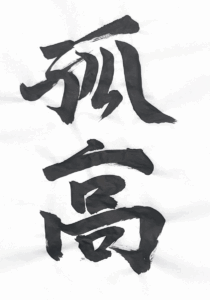
**不屈 (Fukutsu – Resilience)**
Represents unwavering mental strength and is often chosen as a symbol of overcoming hardship.
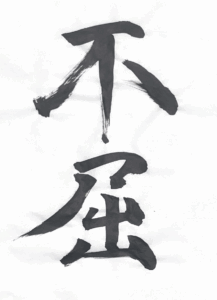
**無限 (Mugen – Infinity)**
Conveys limitless potential and eternal hope. Often used to express one’s belief in their own possibilities.
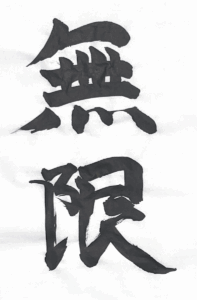
**刹那 (Setsuna – Fleeting Moment)**
A uniquely Japanese concept that expresses the fleeting beauty of the present moment. Often chosen by those who value living in the now.
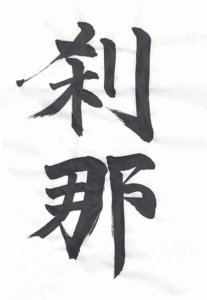
**破壊 (Hakai – Destruction)**
Chosen to represent personal transformation or breaking free from the past. It symbolizes the idea of creative destruction.
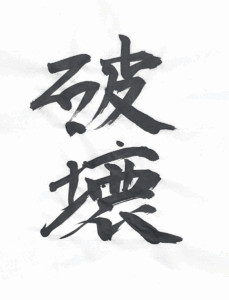
**狂気 (Kyouki – Madness)**
Popular among artists or those who reject convention, expressing a passion that defies normality.
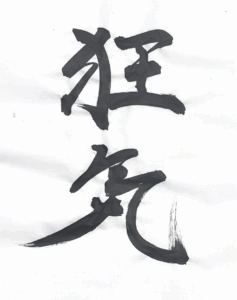
**無我 (Muga – Selflessness)**
A Buddhist concept symbolizing spiritual liberation and the transcendence of ego.
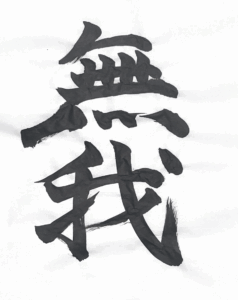
These kanji allow people to express more individual and philosophical values compared to conventional choices like “love” or “dream.”
2.2 Popular Styles by Design
**Calligraphy Style**
Utilizes brush-like strokes to give a dynamic and artistic look. Suitable for bold characters like “龍 (dragon)” or elegant ones like “雅 (grace).”
**Kaisho (Block Script)**
A clean and formal style, easy to read and ideal for beginners. Works well with common characters like “愛” or “希望.”
**Gyousho (Semi-Cursive)**
Features flowing lines and a sense of motion. Great for dynamic characters like “永遠 (eternity)” or “流水 (flowing water).”
**Modern Interpretation**
A customized blend of traditional and modern elements. Ideal for expressing individuality and concepts like “自由 (freedom)” or “革新 (innovation).”
2.3 Popular Placement Choices
**Wrist/Forearm**
Frequent visibility makes this area ideal for meaningful one-character designs in Kaisho or Gyousho script.
**Back**
A large canvas perfect for full phrases or artistic brush-stroke kanji like “一期一会 (once-in-a-lifetime)” or “天下無敵 (invincible).”
**Shoulder/Upper Arm**
Great for two-character phrases with balanced layout, such as “勇気 (courage)” or “信念 (belief).”
3. Common Mistakes with Kanji Tattoos
3.1 Mistranslation
One of the biggest issues is incorrect translation. Relying solely on online tools can result in awkward or incorrect characters.
For example, “Strength” might be wrongly translated as “強度 (physical strength)” instead of “力.” Or “Beautiful Soul” might become “美魂,” which sounds unnatural in Japanese.
3.2 Poor Design Choices
Even correct meanings can look bad due to design imbalance. Font, size, and spacing need to be carefully planned. Overly artistic fonts may become unreadable.
Also, choosing colors that don’t match your skin tone can diminish the tattoo’s visual impact—especially for non-Japanese clients.
3.3 Cultural Misunderstandings
Kanji may have religious or cultural significance. Using them without understanding the context can be seen as disrespectful.
Avoid combining kanji that contradict each other or hold inappropriate meanings. Working with a Japanese artist helps prevent these problems.
4. How to Choose a Kanji Tattoo Without Regrets
4.1 Understand the Meaning
Make sure you fully understand not just the dictionary definition, but also the cultural context of the kanji.
Consult a native Japanese speaker to confirm the character’s usage and impression in modern Japanese.
4.2 Plan the Design
Once the meaning is clear, consider how the kanji will look on your body. Choose a font that matches your intention and body shape.
Kaisho is clean and formal, Gyousho is artistic and flowing, while Sosho and Tensho offer stylized but harder-to-read forms.
4.3 Consult with a Tattoo Artist
Work closely with an experienced, kanji-literate tattoo artist. They can guide you on aesthetics, technical feasibility, and proper cultural usage.
Choose a studio with strong aftercare support and, for foreigners, staff who speak English.
5. Why Get a Kanji Tattoo in Tokyo?
5.1 Cultural Authenticity
Tokyo artists are immersed in the culture and philosophy of kanji. Their insights go beyond aesthetics to deliver tattoos that truly reflect the meaning of the characters.
5.2 High Technical Skill
Tokyo’s tattoo studios are known for their precision and hygiene standards. Their skills are especially well-suited for detailed kanji work.
5.3 Easy Access
Tokyo is home to many reputable studios, easily accessible by public transit. Many cater to international clients with English-speaking staff.
6. Recommended: Get Your Ideal Kanji Tattoo at Tattoo Studio KAGEROU
Please watch this video to learn more about the studio.
6.1 About Tattoo Studio KAGEROU
With locations in Nihonbashi, Ikebukuro, Shinjuku, and Yokohama, KAGEROU is one of Tokyo’s most respected studios.
They specialize in kanji tattoos, with deep understanding of both meaning and design. The studio has extensive experience working with international clients.
Each artist takes time to understand your values and intentions to create a custom design that reflects your personal philosophy.
6.2 Clean, Safe Environment
KAGEROU studios adhere to rigorous hygiene standards. All tools are sterilized, and treatment areas are sanitized regularly.
They provide personalized consultation from kanji selection to final design and aftercare, with English-speaking staff available.
6.3 Trusted Results
With four convenient locations and a strong reputation, KAGEROU is trusted by clients from around the world. Their technical excellence and artistic approach make them a top choice for kanji tattoos.
6.4 Artists specializing in Kanji tattoos
If you want to get a Kanji tattoo in KAGEROU, TOMOYA is the place to go.
TOMOYA
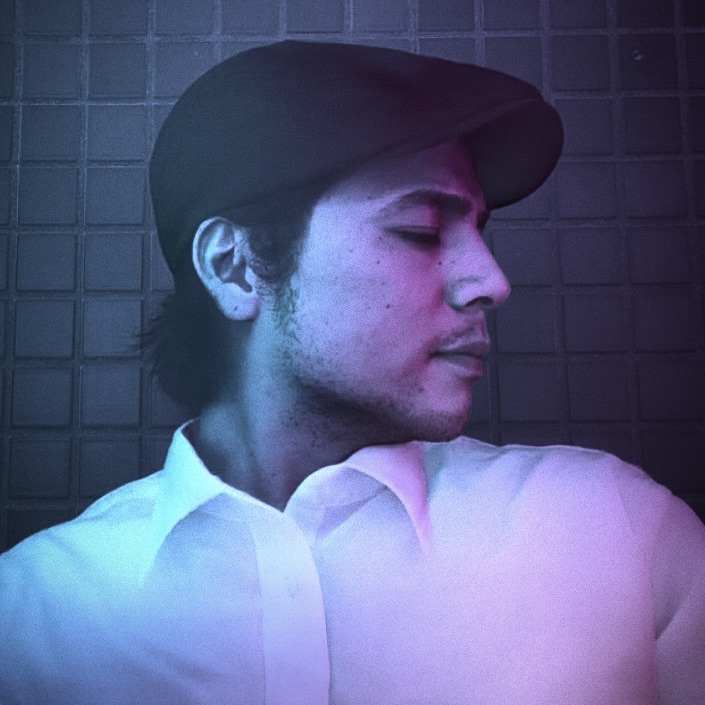
Tomoya, who is also active as a calligrapher, is a versatile tattoo artist known for his wide range—from the delicate expression of traditional ink painting to bold, dynamic old-school designs.
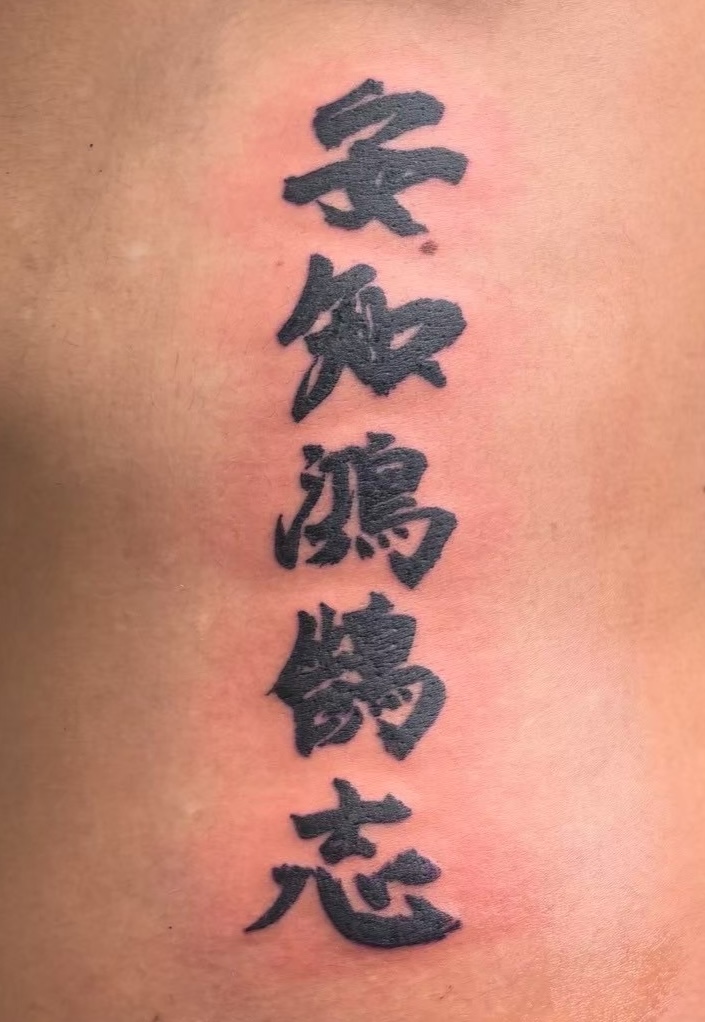
He is especially skilled in kanji tattoos, bringing each character to life with balance, elegance, and deep meaning—drawing from his background in Japanese calligraphy.
Having lived in the U.S., Tomoya has a strong grasp of international culture and tattoo trends. He excels in traditional Japanese motifs such as kamon (family crests) and ukiyo-e–inspired art, making him a popular choice among foreign visitors seeking culturally rooted tattoos.
He is fluent in English, allowing clients from around the world to comfortably discuss design concepts, meanings, and custom ideas.
7. Conclusion: Your One-of-a-Kind Kanji Tattoo
Kanji tattoos offer a unique blend of beauty and depth, but require careful consideration to avoid mistakes.
Understanding the meaning, choosing the right design, and working with an experienced artist are key to success.
In Tokyo—the birthplace of kanji—working with a skilled artist ensures your tattoo becomes more than decoration: it becomes a personal work of art that expresses your values and life journey.
At KAGEROU, we offer free consultations and professional advice on kanji tattoos. Let our experts help bring your ideal design to life.

